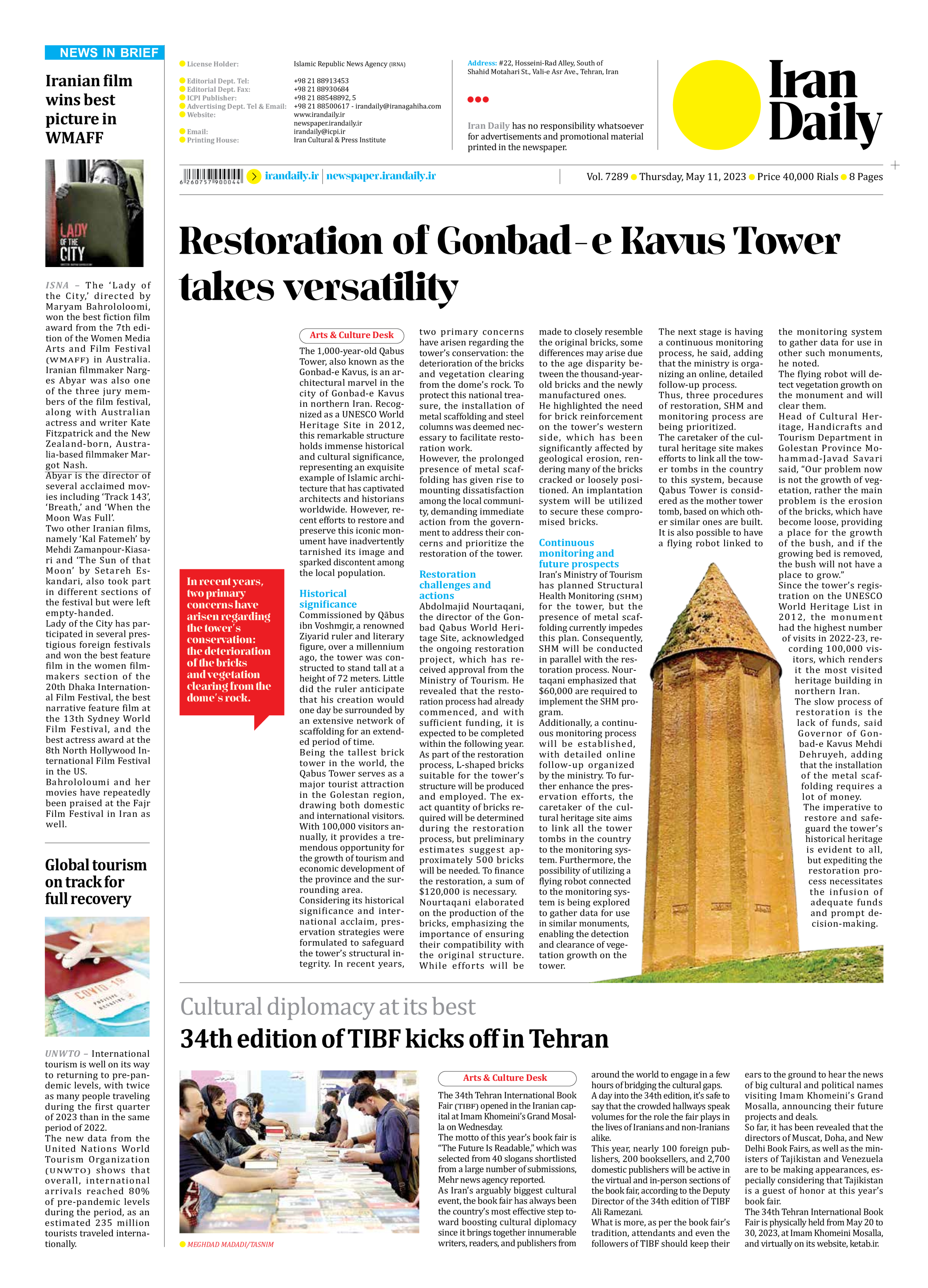
Restoration of Gonbad-e Kavus Tower takes versatility
The 1,000-year-old Qabus Tower, also known as the Gonbad-e Kavus, is an architectural marvel in the city of Gonbad-e Kavus in northern Iran. Recognized as a UNESCO World Heritage Site in 2012, this remarkable structure holds immense historical and cultural significance, representing an exquisite example of Islamic architecture that has captivated architects and historians worldwide. However, recent efforts to restore and preserve this iconic monument have inadvertently tarnished its image and sparked discontent among the local population.
Historical significance
Commissioned by Qābus ibn Voshmgir, a renowned Ziyarid ruler and literary figure, over a millennium ago, the tower was constructed to stand tall at a height of 72 meters. Little did the ruler anticipate that his creation would one day be surrounded by an extensive network of scaffolding for an extended period of time.
Being the tallest brick tower in the world, the Qabus Tower serves as a major tourist attraction in the Golestan region, drawing both domestic and international visitors. With 100,000 visitors annually, it provides a tremendous opportunity for the growth of tourism and economic development of the province and the surrounding area.
Considering its historical significance and international acclaim, preservation strategies were formulated to safeguard the tower’s structural integrity. In recent years, two primary concerns have arisen regarding the tower’s conservation: the deterioration of the bricks and vegetation clearing from the dome’s rock. To protect this national treasure, the installation of metal scaffolding and steel columns was deemed necessary to facilitate restoration work.
However, the prolonged presence of metal scaffolding has given rise to mounting dissatisfaction among the local community, demanding immediate action from the government to address their concerns and prioritize the restoration of the tower.
Restoration challenges and actions
Abdolmajid Nourtaqani, the director of the Gonbad Qabus World Heritage Site, acknowledged the ongoing restoration project, which has received approval from the Ministry of Tourism. He revealed that the restoration process had already commenced, and with sufficient funding, it is expected to be completed within the following year.
As part of the restoration process, L-shaped bricks suitable for the tower’s structure will be produced and employed. The exact quantity of bricks required will be determined during the restoration process, but preliminary estimates suggest approximately 500 bricks will be needed. To finance the restoration, a sum of $120,000 is necessary.
Nourtaqani elaborated on the production of the bricks, emphasizing the importance of ensuring their compatibility with the original structure. While efforts will be made to closely resemble the original bricks, some differences may arise due to the age disparity between the thousand-year-old bricks and the newly manufactured ones.
He highlighted the need for brick reinforcement on the tower’s western side, which has been significantly affected by geological erosion, rendering many of the bricks cracked or loosely positioned. An implantation system will be utilized to secure these compromised bricks.
Continuous monitoring and future prospects
Iran’s Ministry of Tourism has planned Structural Health Monitoring (SHM) for the tower, but the presence of metal scaffolding currently impedes this plan. Consequently, SHM will be conducted in parallel with the restoration process. Nourtaqani emphasized that $60,000 are required to implement the SHM program.
Additionally, a continuous monitoring process will be established, with detailed online follow-up organized by the ministry. To further enhance the preservation efforts, the caretaker of the cultural heritage site aims to link all the tower tombs in the country to the monitoring system. Furthermore, the possibility of utilizing a flying robot connected to the monitoring system is being explored to gather data for use in similar monuments, enabling the detection and clearance of vegetation growth on the tower.
The next stage is having a continuous monitoring process, he said, adding that the ministry is organizing an online, detailed follow-up process.
Thus, three procedures of restoration, SHM and monitoring process are being prioritized.
The caretaker of the cultural heritage site makes efforts to link all the tower tombs in the country to this system, because Qabus Tower is considered as the mother tower tomb, based on which other similar ones are built.
It is also possible to have a flying robot linked to the monitoring system to gather data for use in other such monuments, he noted.
The flying robot will detect vegetation growth on the monument and will clear them.
Head of Cultural Heritage, Handicrafts and Tourism Department in Golestan Province Mohammad-Javad Savari said, “Our problem now is not the growth of vegetation, rather the main problem is the erosion of the bricks, which have become loose, providing a place for the growth of the bush, and if the growing bed is removed, the bush will not have a place to grow.”
Since the tower’s registration on the UNESCO World Heritage List in 2012, the monument had the highest number of visits in 2022-23, recording 100,000 visitors, which renders it the most visited heritage building in northern Iran.
The slow process of restoration is the lack of funds, said Governor of Gonbad-e Kavus Mehdi Dehruyeh, adding that the installation of the metal scaffolding requires a lot of money.
The imperative to restore and safeguard the tower’s historical heritage is evident to all, but expediting the restoration process necessitates the infusion of adequate funds and prompt decision-making.







